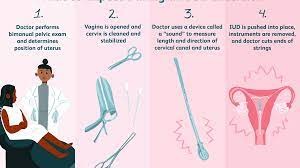Smoking is one of the most difficult addictions to break. Nicotine is a highly addictive substance that can cause serious health problems, including cancer, heart disease, and stroke. Quitting smoking can be a daunting task, but it is possible. Breaking free from nicotine addiction requires dedication, commitment, and a plan. This article provides tips for quitting smoking and breaking free from nicotine addiction. It covers topics such as understanding nicotine addiction, developing a quit plan, managing cravings, and finding support. With the right tools and support, you can break free from nicotine addiction and live a healthier life.
How to Overcome Nicotine Cravings: Strategies for Quitting Smoking
Quitting smoking is a difficult process, and nicotine cravings can be a major obstacle. Fortunately, there are a number of strategies that can help you overcome these cravings and stay on track with your quit plan.
First, it is important to understand why nicotine cravings occur. Nicotine is a highly addictive substance, and when you quit smoking, your body is no longer receiving the regular doses of nicotine it has become accustomed to. This can lead to physical and psychological cravings for nicotine.
To help manage nicotine cravings, it is important to have a plan in place. This plan should include strategies for dealing with cravings when they occur. Here are some tips for overcoming nicotine cravings:
1. Avoid triggers. Identify situations or activities that may trigger cravings and try to avoid them. This could include going to places where people are smoking, drinking alcohol, or engaging in other activities that you associate with smoking.
2. Distract yourself. When cravings strike, try to distract yourself with a different activity. This could include going for a walk, reading a book, or doing something else that takes your mind off of the craving.
3. Exercise. Exercise can help reduce nicotine cravings by releasing endorphins, which can help reduce stress and anxiety.
4. Practice relaxation techniques. Deep breathing, meditation, and other relaxation techniques can help reduce stress and anxiety, which can help reduce nicotine cravings.
5. Talk to someone. Talking to a friend or family member can help you stay on track with your quit plan and provide emotional support.
6. Seek professional help. If you are having difficulty managing nicotine cravings, consider seeking professional help from a doctor or therapist.
By following these tips, you can increase your chances of successfully quitting smoking and overcoming nicotine cravings. Remember, quitting smoking is a process, and it may take time and effort to achieve your goal. With dedication and perseverance, you can overcome nicotine cravings and become smoke-free.
The Benefits of Breaking Free from Nicotine Addiction: Why Quitting Smoking is Worth It
Smoking is a dangerous and addictive habit that can have serious health consequences. Quitting smoking is one of the best things a person can do for their health and wellbeing. Breaking free from nicotine addiction can have a range of positive benefits, both physical and psychological.
Physically, quitting smoking can reduce the risk of developing serious health conditions such as cancer, heart disease, and stroke. It can also improve lung function, reduce the risk of developing respiratory illnesses, and improve overall physical fitness. Quitting smoking can also improve the appearance of skin and teeth, reduce bad breath, and reduce the risk of developing gum disease.
Psychologically, quitting smoking can reduce stress and anxiety, improve mood, and increase energy levels. It can also help to improve concentration and focus, and reduce the risk of developing depression. Quitting smoking can also help to improve relationships, as it can reduce the risk of second-hand smoke exposure for family and friends.
In addition to the physical and psychological benefits, quitting smoking can also have financial benefits. Smoking is an expensive habit, and quitting can save a person a significant amount of money over time.
Overall, quitting smoking is a difficult but worthwhile endeavor. Breaking free from nicotine addiction can have a range of positive benefits, both physical and psychological. Quitting smoking can reduce the risk of developing serious health conditions, improve mood and energy levels, and save money. For these reasons, quitting smoking is worth it.
Conclusion
Breaking free from nicotine addiction is a difficult but achievable goal. With the right support, resources, and strategies, anyone can quit smoking and live a healthier, happier life. Quitting smoking is a process that requires dedication and commitment, but it is worth it in the end. With the right plan and support, anyone can break free from nicotine addiction and enjoy a healthier, smoke-free life.
